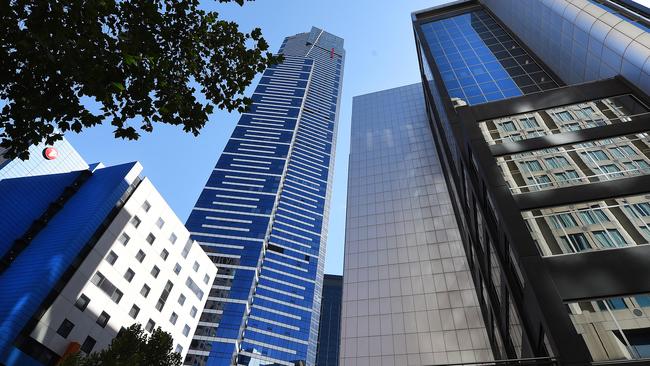NAB warns of apartment glut, flags economic slowdown
Red flags have been raised about a coming avalanche of apartments, with NAB eyeing Melbourne as most at risk.

Sydney and Melbourne may be adding apartments at a rate more than double that required to meet demand, NAB economists have warned in their latest update on the Australian economy, although it is the Melbourne apartment market seen at most risk of a market correction.
In its regularly updated outlook on the Australian economy, NAB again reiterated its view for economic growth to slow across the next couple of years as the LNG export boom loses steam and as the residential construction cycle “turns down”.
It is the latter facet of the projected slowdown in growth from 3.3 per cent in fiscal 2016 to 2.6 per cent in calendar 2018 that will draw the most focus, given the concerns flagged by economists and the Reserve Bank about the remarkable uptick in apartment supply over the past couple of years.
NAB analysts, headed by chief economist Alan Oster and head of Australian economics Riki Polygenis, said the extent of apartment construction raised questions about price growth.
“Given the historical relationship between building approvals and population, the increase in medium-density approvals have been significantly larger than population growth would normally suggest — especially in NSW and Victoria where apartment approvals are increasing two to three times the normal rate needed to meet demand,” the report said.
The bank didn’t go as far as to say there definitely was a glut, but sounded the alarm on future construction trends.
“Given our expectation for construction going forward, with steady population growth, the national market is expected to shift into ‘oversupplied’ by the end of 2017,” NAB said.
“While it is expected to take a long time to run down pent-up demand in NSW, Victoria is already estimated to be in oversupply, following solid construction rates post-GFC — although Victoria is also expected to have the fastest population growth long-term.”
The analysis pointed to Melbourne as the most “at risk of a market correction”, even if vacancy rates don’t yet point to a significant oversupply.
Vacancy rates are often a good sign of the supply situation, although new tenancy bonds have failed to match growth in dwelling completions in a sign “foreign buyers [may be] deliberately keeping properties vacant”.
NAB added property prices had so outpaced its expectations of late, leading to “substantial upside risk” to its forecast for house price growth of 5 per cent for houses and 3.5 per cent for units this year.
“Indicators of momentum in the housing market have been mixed of late, but despite this, (hedonic) prices in Sydney and Melbourne appear to be taking off again, and are at risk of being further spurred on by the RBA’s August rate cut,” the report read.
“These trends remain a surprise in the context of growing concerns over new housing supply, uncertain foreign (and domestic) investor demand and stretched household balance sheets.”
The group still expects “headwinds to bite” in the coming months and years, although perhaps not swiftly enough to see its modest 2017 growth expectations of 0.5 per cent for houses and -2 per cent for units to be met.
In a wideranging analysis, NAB retained its forecast for two rate cuts from the Reserve Bank in 2017, although it expects no change before year’s end.
It did, however, lift its end of year forecast for the Australian dollar by US5c to US75c.
“NAB … now expects the AUD to hold up through the remainder of 2016, before easing to US70c by end-2017 in response to a higher USD following an expected Fed rate hike in December, rate cuts from the RBA in the middle of 2017 and another leg down in key commodity prices such as iron ore through 2017,” the report noted.
“The currency is then expected to broadly stabilise through 2018.”






To join the conversation, please log in. Don't have an account? Register
Join the conversation, you are commenting as Logout